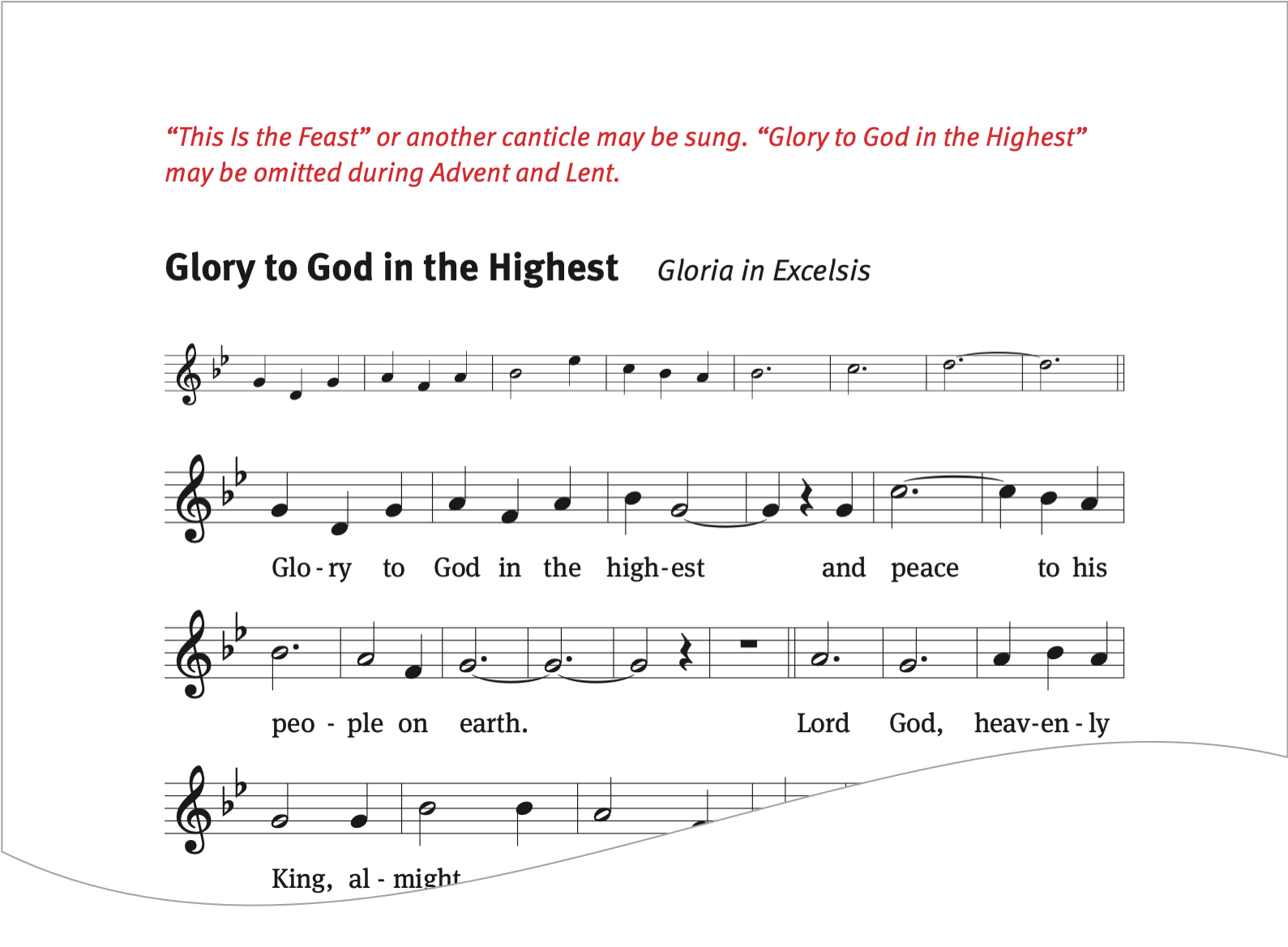The preview of the Rites section of the hymnal features one setting of The Service, a version of the historic liturgy of the Western Christian church. The progression familiar to worshipers in our church body is evident. Worshipers will also notice a few elements of The Service that are new:
The text of “Lord, Have Mercy” traces its origins to the Eastern church’s Litany of Peace.
The responses after the readings (“The Word of the Lord. Thanks be to God.”) are widely used throughout the Christian world, and they provide a simple, interactive way to acknowledge the gifts God gives in his Word.
One change in the progression of The Service is to pray the Prayer of the Church before the offering. (Also noticeable is that the congregation is invited to be seated for this longer prayer.)
The Prayer of Thanksgiving is both ancient and new; a version of this prayer was reintroduced in Christian Worship: Supplement.
Confession
“The Service” is the title we are using for a rite of worship with Holy Communion. A single text is used in each of the three settings of The Service. That single text begins with two options for Confession.
Having a single text for The Service is intended to foster familiarity with both the words and the flow of the rite. In a short amount of time, all worshipers—young children, nonreaders, the visually impaired, etc.—can become familiar with the text that carries these timeless truths to the head and heart. The individual elements of The Service also follow the same pattern across the different settings. A general Kyrie will always follow the absolution; the Creed will always follow the sermon.
The hymnal’s layout and design put emphasis on clear and simple visual hierarchy. Here plain print and bold print are sufficient to distinguish parts spoken by minister and assembly without the need for further visual complexity.
Red running footers for the three settings of The Service assist navigation for those worshiping from the pew edition of the hymnal.
Red lines indicate optional choices: a unique textual introduction to each Confession signals which option will be used without requiring the minister to make an unnecessary announcement to those worshiping from the book. When reproducing The Service with Christian Worship: Service Builder, only one Confession option will be printed.
Kyrie and Gloria
While the single text of The Service fosters familiarity, the different musical settings will provide variety. That musical variety begins with the music of the Kyrie, which is unique to each setting of The Service. Three different musical settings of The Service will appear in the hymnal pew edition. Five or six more settings of The Service will be available in Christian Worship: Service Builder.
The Kyrie that appears in each setting of The Service is a general Kyrie. It does not appear in connection with the confession of sins. Appearing after the absolution, the Kyrie asks for God’s mercy to be shown to us in several different and important ways as we live out our days in the peace of God’s forgiveness.
Setting Two and Setting Three (hymnal pew edition) have musical settings both for organ and brass and for piano/guitar/ensemble. Both organ and piano settings of the liturgical songs are printed out in full in Christian Worship: Accompaniment for Liturgy, Psalms, and Gospel Acclamations. Additional instrumental parts for all liturgical music will be available digitally in Christian Worship: Musician’s Resource.
While printed with music, the minister’s parts of the Kyrie may also be spoken.
For ease of singing, congregational parts of the Kyrie have a repeating melodic pattern.
The music of the introduction is printed to clearly show when singing is to begin.
When a composer has written music that is intended for unison singing, only the melody is printed.
Gospel Acclamation
New to The Word section of The Service is standing for the Gospel Acclamation (previously called the Verse of the Day). To acclaim the Gospel is to express enthusiastic approval of it. Our King is coming to us in the Gospel as we hear the words and works of Jesus. We stand to welcome him and his healing message of pardon and life.
A verse of the day situated between alleluia refrains is a pattern familiar to worshipers. That pattern is used in the hymnal pew edition with seasonal verses that may be chanted between the refrains either by the minister or by a cantor or by the entire assembly.
“Thanks be to God,” spoken as a response to the readings, will quickly become second nature for worshipers.
Seasonal verses may be sung as part of the Gospel Acclamation, but many more proper verses of the day are available.
To provide variety over years of use, Christian Worship: Service Builder will also include more than a dozen different alleluia refrains, along with a proper verse of the day for every individual festival across years A, B, and C.
Creed
One of the reasons for utilizing a single text in The Service is to keep the individual elements of that single text in the same place across different settings. Standardizing the placement of the Creed after the sermon removes any wondering about where the Creed is spoken week after week.
The Creed follows the sermon in every setting of The Service.
Many congregations speak the Apostles’ Creed in services that do not include Holy Communion. Both creeds are printed in The Service.
Prayer of the Church
The Prayer of the Church does not have a historical connection with the beginning of the Holy Communion service. For this reason, the Prayer of the Church has been set apart from the beginning of the Holy Communion service by being placed before the gathering of the offering. Worshipers are also invited to be seated for this prayer, which is lengthy at times.
As with the Kyrie, the minister’s parts of the Preface dialogue may be spoken. Congregations may also wish to enlist the services of a cantor for these sung minister’s parts.
Worshipers are seated for the Prayer of the Church.
The gathering of the offering follows the Prayer of the Church and provides an appealing pause to mark the transition between the two chief parts of The Service.
Prayer of Thanksgiving
Worshipers were reacquainted with the use of a Prayer of Thanksgiving in Christian Worship: Supplement, Divine Service II. That prayer returns to its historical location within the service of Holy Communion.
To avoid redundancy, the Proper Prefaces are printed in full only in The Service, Setting One.
A Prayer of Thanksgiving as part of the Holy Communion rite is now standard across all settings of The Service.
Agnus Dei and Distribution
The Service concludes in a familiar way. Congregations may choose to sing various versions of the Song of Simeon, which will be printed in the hymns section and will be available in Christian Worship: Service Builder.
Responsive Scripture passages are spoken after the Distribution and before the prayer.
A variety of materials are available in the hymn section and in Christian Worship: Service Builder for those wishing to sing the optional closing hymn or canticle.










